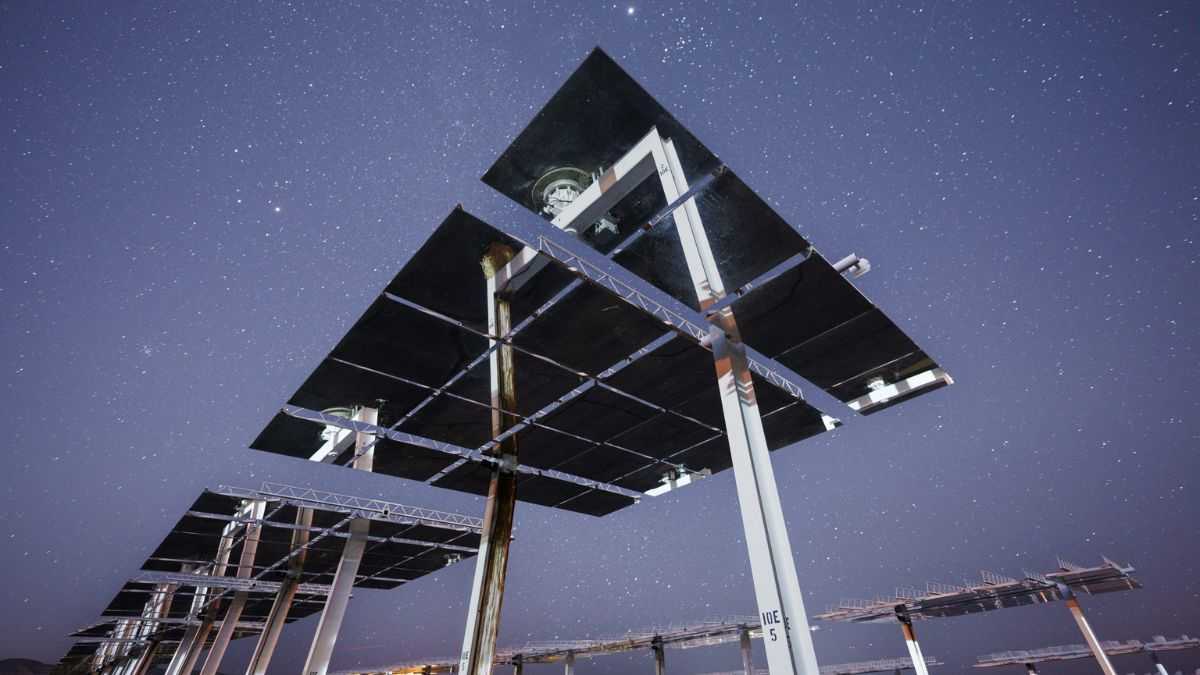Science
We Buy More Than We Plan. How the Psychological Trap Works
31 December 2025

Most solar farms simply "sleep" at night. American scientist John Sandusky wants to change that and use them to hunt for asteroids. The key is an unusual technology that turns thousands of mirrors into one giant telescope.
Photovoltaics are an increasingly popular source of energy. In 2024, approximately 130 gigawatts of power were obtained this way worldwide. Critics of this energy revolution point out that at night, vast fields covered with modules are of little use. This problem can be partially solved by connecting large-scale energy storage units to the grid. Why only partially? Batteries can only store the excess electricity generated during the day—after sunset, photovoltaics still do not work.
The situation may change thanks to John Sandusky, a scientist at the American Sandia National Laboratories. He has found a new use for solar panels at night. Due to how they react to light, it will be possible to use them to track the night sky and perhaps even detect asteroids.
You might like to read: Nuclear Power From a Truck? Meet the New Generation of Small Nuclear Reactors
Sandusky’s idea concerns a specific type of solar farm equipped with heliostats. These work as mirrors that follow the sun’s movement, reflecting rays toward a central tower located in the middle of the field. In this process, the light is focused like it’s passing through a magnifying glass, generating heat used to warm water or power generators.
At night, starlight or other objects in the sky fall onto the heliostats. This light is too weak to be used for heating, but it is strong enough for the entire system to detect it. Photodiodes on the surface of the heliostats generate a flow of energy when they register light. In the case of the night sky, this flow is small but allows for the detection of specific objects.
“It’s like listening to wind chimes instead of the wind itself,” Sandusky explained to Space.com. “The heliostats shift subtly relative to the stars, keeping a steady rhythm throughout the night. The stream of light from the stars creates one tone. Light from an asteroid that moves along with that shift generates a slightly different tone because each shift hits the asteroid at a slightly different spot relative to the stars.”
Tests of this solution are currently underway. Sandusky has used a heliostat at the Sandia National Solar Thermal Test Facility in Albuquerque several times to observe stars. So far, he has not yet tried to detect asteroids. He emphasizes that the next step is to be able to scale this solution to more than one device. The facility has a total of 212 heliostats that could be used for this purpose, but there are facilities with a much larger number of these devices. The Ivanpah power plant in the Mojave Desert has as many as 175,500 heliostats.
There are as many as 114 similar power plants worldwide. Sandusky notes, however, that using a larger number of such facilities to observe the night sky is not an easy task. “To hunt for asteroids on a global scale, solar panel farms on Earth would need to be synchronized according to a common time standard and equipped with photodiodes and other necessary optical and electronic devices,” says the scientist. Scaling up such a project requires considerable funds and breaking through the bureaucracy of at least several countries. However, Sandusky is not losing hope and is currently focusing on testing and popularizing his idea.
Read the original article: Nowa rola paneli słonecznych. Mogą wykrywać zagrożenia z kosmosu


Humanism
30 December 2025

Zmień tryb na ciemny